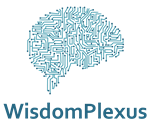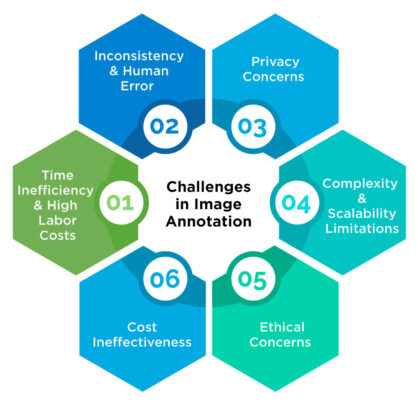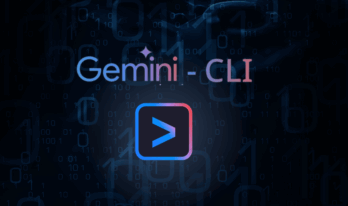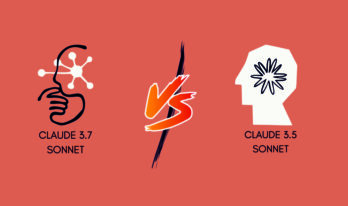The quality of an input tells you the quality of its output. To build a dependable computer vision model, one needs to feed the learning algorithm that is accurate with its labels. Annotation of images, if done incorrectly, can be very expensive. And no organization wants expensive damages.
The process of annotation of images entails the addition of metadata to images through tagging, which enables AI systems to understand them. Computer vision models become ineffective when dealing with visual data because they need precise image annotation.
The picture annotation technique facilitates crucial training tasks for machine learning models, especially for applications involving computer vision. The discipline of image annotation determines how well artificial intelligence systems can identify objects and behaviors.
So, let’s discuss what image annotation is all about.
What Is Image Annotation?
Machine learning models receive image annotation when human analysts place descriptive tags onto pictures for the detection of objects along with defining borders and features. AI algorithms receive accurate predictions through ground truth data which is created by adding labels and descriptions to images. Computer vision model effectiveness primarily relies on the superior quality of training data within the annotation sets. High-quality annotation methods result in better object detection responses and classification outcomes in addition to more precise segmentation for an improved model performance.
Types of Image Annotation
These techniques vary, based on the complex demands of a task combined with the application requirements.
One widely used annotation approach includes bounding box annotation because it draws rectangular shapes to highlight objects in images.
Autonomous driving technology with security surveillance systems both utilize this annotation approach. The process of polygon annotation enables accurate definition of irregular-shaped object limits through manual outlines. Proper detection of road signs and animals and human postures requires this annotation type. Semantic segmentation goes beyond basic annotation by providing class labels for every image pixel which enables AI models to recognize object types among background features.
Instance segmentation represents an advanced annotation technique for recognizing different objects belonging to the same group in image segments. Medical imaging technologies as well as robotic applications implement this technique because it enables exact identification of objects. Key point annotation enables precise marking of object or human body points therefore serving gesture recognition motion tracking and facial analysis needs.
Why Image Annotation Is Essential for Machine Learning?
Machine learning models require a deep training process using precisely labeled images since images serve as their primary source of understanding visual data. AI systems cannot perform their functions properly when annotation standards are not properly followed since they could both misunderstand objects and fail to tell similar-looking elements apart. Incorrect predictions along with unreliable decision-making can occur from this situation.
The training of computer models across different fields depends on annotation of image since AI diagnostic systems in healthcare need labeled medical pictures to discover diseases. The functionality of self-driving vehicles depends heavily on the annotation of road images to identify traffic signs together with pedestrians and other vehicles on the road. Retail businesses together with e-commerce institutions apply visual search and recommendation systems powered by annotated product images to enhance the retail customer journey.
Challenges in Image Annotation
- Time Inefficiency and High Labor Costs
- Inconsistency and Human Error
- Privacy Concerns
- Complexity and Scalability Limitations
- Ethical Concerns
- Cost Ineffectiveness
AI development requires annotation, but implementing this practice presents multiple technical issues.
A major difficulty during the manual annotation process involves lengthy periods and the high effort needed to mark extensive datasets. It takes expensive human expertise along with high labor costs to perform finesse annotation tasks. The precision of annotations proves to be a difficulty because errors made by humans can degrade model performance standards. The large scale of image databases creates scalability problems for various industries.
The impractical nature of manual image labeling for millions of pictures drove industries to adopt annotation tools integrated with artificial intelligence that help human annotators. Automated methods need human validation for quality maintenance in their operations.
The challenge exists in processing images containing ambiguous objects that also overlap each other. Picture annotation in complex situations demands sophisticated annotation methods combined with skilled annotators to determine clear object boundaries. Applications that use facial recognition platforms require ethical oversight because both data privacy and bias must receive proper attention.
Automated vs. Manual Image Annotation
Machine learning models receive training through user-manual and automated approaches for annotating images. Human annotators use manual methods to label images to ensure specific and precise results.
AI models of high quality require these annotation methods for their training, especially when precise annotation details must be provided. While this process manages to return accurate results, it takes a great deal of time, along with generating high costs. Tools controlled by artificial intelligence now facilitate fast annotation tasks. Pretrained models work through these tools to identify objects present in images while providing their respective labels.
Automated methods speed up annotation processes, but their accuracy in precision-sensitive situations falls short of human annotator performance. AI projects succeed using joint efforts between manual and automated annotation methods for optimal performance.
Applications of Image Annotation in Computer Vision
The implementation of annotation produces effects in various industrial sectors.
Healthcare operations use annotated medical images to help detect diseases while segmenting tumors and performing radiology examinations through AI models.
It drives better diagnostic outcomes that help healthcare professionals to reach well-informed medical decisions. Self-driving cars in the automotive industry need labeled images for detecting road features together with pedestrians and other vehicles.
Correctly annotated information enables autonomous systems to move through their surroundings without hazards and detect potential barriers. It allows retail businesses and e-commerce enterprises to use annotated images for product identification and recommendation system development.
AI systems that receive labeled images generate better search results for customers. Security and surveillance applications need annotated facial images because they help their facial recognition systems identify individuals. Access control, together with law enforcement and border security operations, extensively uses this technology.
The Future of Image Annotation
Deep advancements, along with increased efficiency for image annotation, will occur as AI develops further. Deep learning models that integrate with annotation procedures will create automated systems that require less human involvement in this process. AI-directed annotation software will continue upgrading its accuracy features and scalability elements, thus leading to increased speed and reduced costs in the annotation process.
Large-scale analysis projects will depend heavily on crowdsourcing platforms because these systems will utilize distributed teams across multiple regions to mark different types of datasets. AI systems will generate synthetic data to supplement actual data collection in order to overcome data scarcity limitations. The evaluation of ethical aspects throughout image annotation operations will maintain its central position while guaranteeing that AI training data remains unbiased and representative.
Final Thoughts to Consider
The basis of computer vision machine learning models depends on image annotation activities. The process converts unprocessed images into organized data structures which AI uses to grasp visual elements for efficient analysis. The accurate annotation of images enables multiple industries to achieve their technological goals because it produces datasets that drive innovation and advancements through machine learning models.
AI developments will drive the evolution of annotation methods through the implementation of automated systems utilizing deep learning approaches to enhance efficiency levels. Computer vision development depends on high-quality annotated data, which makes it an essential part of the process of AI advancement.
For more such informative blogs, visit WisdomPlexus.
Recommended For You:
What Are Model Interpretability Tools in Machine Learning?
What is Computer generated imagery (CGI) and how does it work?





